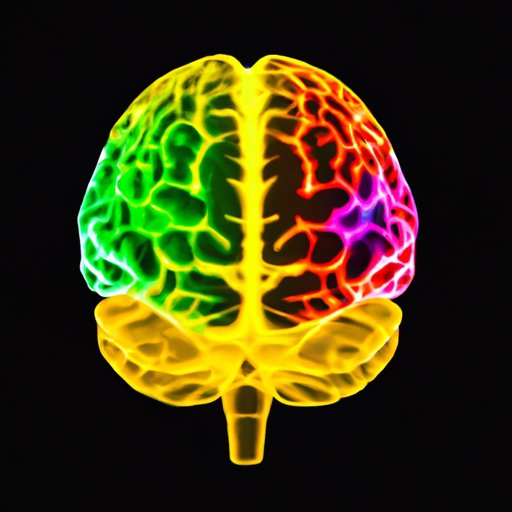
Introduction
Have you ever heard the myth that we only use 10% of our brain? Despite being scientifically disproven, this idea has persisted for years and continues to be popularized in the media. So, how much of our brains do we really use? In this article, we’ll delve into the science of brain activity and explore ways that you can maximize your own brain’s potential.
The Myth of the 10% Brain Usage: Debunked
The myth that we only use 10% of our brain can be traced back to the early 20th century. However, research has proven this idea to be completely untrue. In fact, studies have shown that different regions of the brain are constantly active even when we aren’t consciously aware of it. The brain requires a tremendous amount of energy to function, and it doesn’t allow vast areas to remain permanently dormant.
Unlocking the Potential of Your Brain
Maximizing the potential of your brain requires adopting certain behaviors and habits. It starts with getting enough sleep, as research has shown that lack of sleep can impair various cognitive abilities. Additionally, staying physically active, challenging the mind through constant learning and engagement with new experiences, and practicing stress-reduction techniques have all been shown to positively impact brain function.
The Brain’s Ability to Adapt: A Surprising Look at Neuroplasticity
The brain’s ability to adapt to different circumstances is known as neuroplasticity and has emerged as a revolutionary concept in neuroscience. Our brains have the capability to change in response to the environment and experiences. Even as we age, our brains continue to develop and change. Activities such as learning a new language or skill can help ignite neuroplasticity and enhance various functions of the brain.
Brain Exercises: Strengthening Your Mind Like a Muscle
Challenging the different areas of your brain, much like exercising muscles, can help strengthen your mind and improve cognitive performance. Puzzles, games, and meditation are all activities that can help increase mental agility and creative thinking. Specific workouts, such as left-brain training and right-brain training, can also help individuals strengthen specific areas of the brain.
The Benefits of Multitasking: Fact or Fiction?
The debate around multitasking remains an ongoing discussion in the field of neuroscience. Research has shown that attempting to complete multiple demanding tasks simultaneously can result in experiencing cognitive load, leading to inefficient functioning. However, simple tasks or actions that repeat themselves can become automatic, which frees up mental capacity for other activities. Understanding when multitasking is effective or counterproductive can benefit optimal cognitive functioning.
A Look into Brain Scans: What They Can Tell Us About Ourselves
Technological advancements in brain scanning, such as fMRI, have opened up new doors to understand the neural underpinnings of mental processes. Brain scans have been used in research to identify different regions associated with specific functions. This technology has greatly enhanced our understanding of the complexity and organization of brain activity.
The Connection Between Emotional Intelligence and Brain Functionality
Emotional intelligence refers to the ability to perceive, understand, and regulate one’s emotions, as well as recognize and respond to the emotions of others. Studies have shown that emotional intelligence is linked to specific brain structures involved in emotional processing. Practicing mindfulness and therapy have been shown to be effective tools in fostering emotional intelligence and enhancing brain functionality.
Conclusion
While the myth that we only use 10% of our brain has been debunked, there’s always room for improvement when it comes to maximizing our brain’s potential. Adopting healthy habits, such as getting enough sleep, being physically active, and consistently challenging the mind, can all have a positive impact on mental health and cognitive performance. Understanding the neuroplasticity of the brain and engaging in exercises that target specific areas can further improve brain function. In the end, taking care of ourselves both physically and mentally is crucial to leading a happy and healthy lifestyle.




